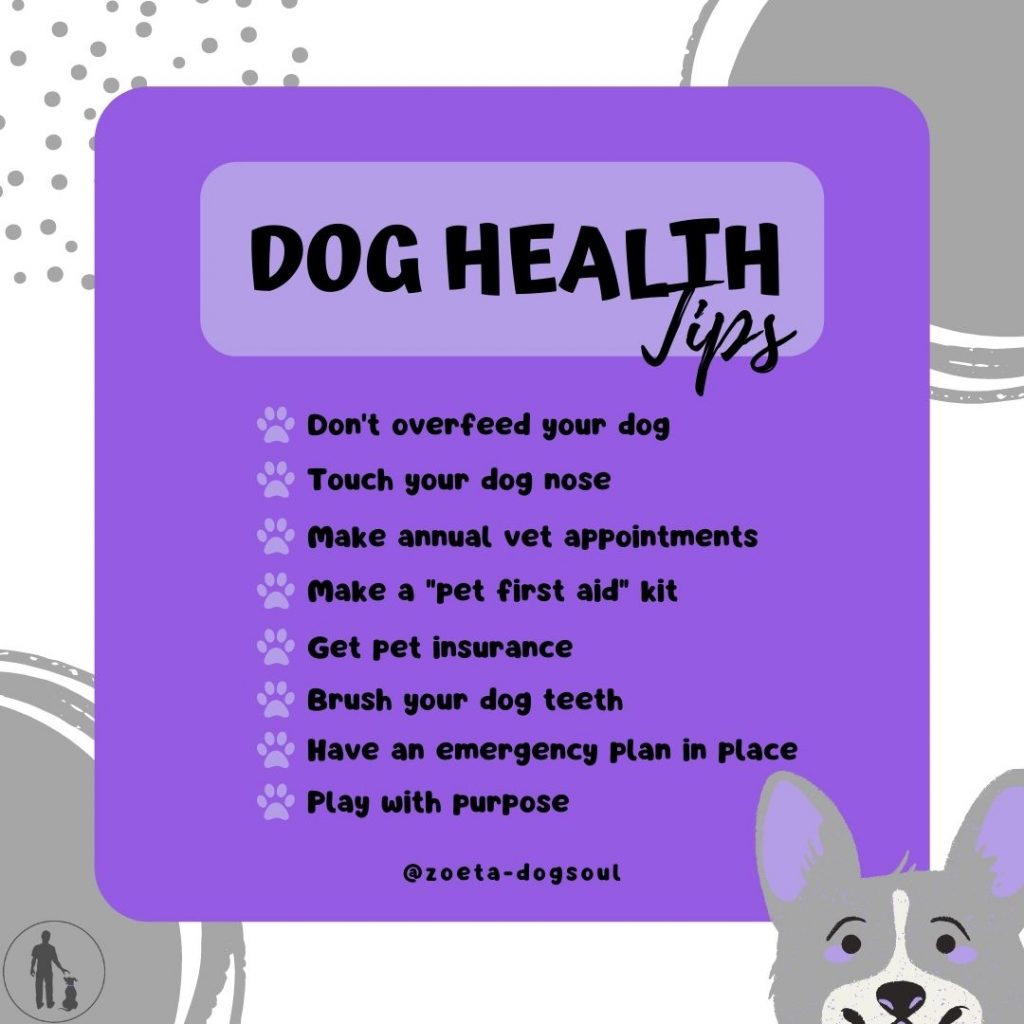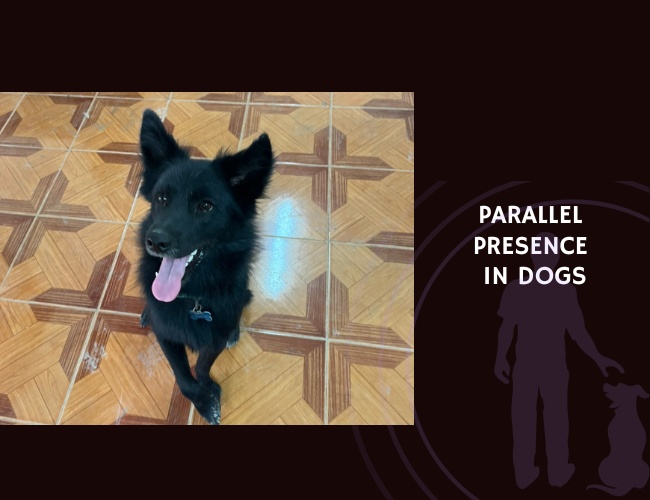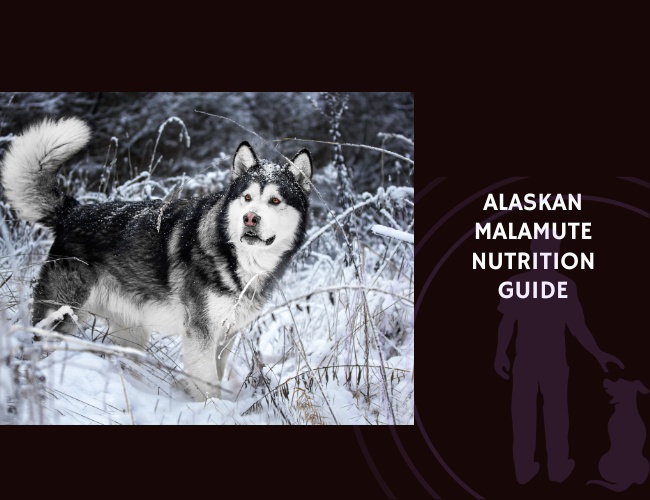Walking our canine friends with a leash is a common scene that we see every day. But have you ever wondered how this simple tool affects your dog’s behavior and overall well-being? Welcome to the world of the ‘leash effect.’ This term refers to a myriad of physiological and psychological changes that dogs undergo when they are on a leash. It is an essential concept for every pet owner because it can help us understand our furry friends better, leading to a healthier and happier relationship with them.
The leash effect is both fascinating and critical to comprehend. Fascinating, because it reveals how simple actions like putting a leash on your pet can influence their behavior. Critical, because understanding this effect can help mitigate any negative impacts and enhance the quality of life for our pets.
Physiologically, being on a leash can alter a dog’s natural posture and movements. Dogs communicate primarily through body language, and subtle changes in their posture can convey different messages to other dogs or humans around them. If the leash restricts or modifies this body language, it might cause misunderstandings or, in some cases, stress and aggression. The leash restricts their freedom of movement, which can also result in physical signs of distress that are crucial for pet owners to recognize.
Psychologically, leashes can induce feelings of stress and anxiety in dogs. This is particularly true when the leash is associated with negative experiences, such as fear or punishment. Additionally, if the dog owner is nervous or worried during the walk, the dog can pick up on these emotions and mirror them, further exacerbating their stress levels. Understanding this complex interplay of emotions is vital to effectively manage and reduce these feelings in dogs when they’re on a leash.
In essence, the leash effect is a profound concept that significantly influences how dogs perceive and interact with the world around them. As responsible pet owners, acknowledging and understanding this effect is the first step towards creating a more harmonious and enjoyable walking experience for our beloved canine companions. Stay tuned as we delve deeper into dog communication, the physiological and psychological impacts of the leash, and how we can better understand and respond to our dogs’ behaviors.
Understanding Dog Communication and Body Language
Dogs, much like humans, have their unique ways of expressing themselves. However, instead of spoken language, they rely heavily on body language to communicate with each other and establish social hierarchies. This communication mode extends from the wag of a tail to the positioning of ears, the posture of the body, and even the expression in their eyes.
Every nuanced movement or position serves as vocabulary in their sophisticated language. For instance, a dog with a relaxed body, wagging tail, and perky ears is likely happy and friendly. In contrast, a rigid body, a tucked tail, laid back ears, and narrowed eyes can indicate fear, stress, or aggression.
The way dogs interact also helps establish their social structure. Dominant dogs may stand tall and display confident body language, while submissive dogs may lower their bodies, avoid direct eye contact, and expose their bellies as a sign of submission. Understanding these subtle cues can provide invaluable insights into your pet’s emotional state and social interactions.
Leash Effect on Dog’s Posture and Communication
While leashes are a necessary tool for safety during walks, they can inadvertently affect a dog’s body language and thus its communication. When a dog is on a leash, its movements become restricted, leading to changes in its natural posture. The leash can pull on the dog’s neck, causing it to lean forward, giving an impression of aggression or dominance to other dogs. This can lead to misinterpretations and potentially spark unnecessary confrontations.
Moreover, the leash can prevent the dog from displaying calming signals or appeasement gestures, such as turning away or licking its nose, which are crucial for preventing conflicts. Other dogs might interpret this lack of calming signals as a threat, increasing tension between the dogs.
It’s essential for dog owners to understand these changes, as misinterpreted signals can escalate into aggressive behavior, causing stress for both the dog and the owner. Recognizing how the leash affects your dog’s body language and communication can improve your walks together and help prevent misunderstandings with other dogs.
The Physiological Impact of the Leash
The leash, an integral part of our dog walks, actually imposes certain restrictions on a dog’s movement that can lead to noteworthy changes in their physical posture. Dogs are naturally agile creatures, built for running, jumping and exploring their environment freely. When this freedom is curtailed by a leash, it can force them into unnatural postures, affecting their overall body language and potentially leading to physical discomfort.
A dog’s posture tells a lot about its current state of mind. A confident and relaxed dog typically has a loose, wiggly body and moves smoothly. But when leashed, the dog may feel constrained, triggering a shift in its body language. You might notice your dog pulling on the leash, arching its back, or walking differently. These changes can be subtle but are indicative of the physical strain the leash imposes.
Physical Signs of Stress or Aggression Induced by the Leash
Restrictive leashes not only influence a dog’s posture but can also lead to visible physical signs of stress or even aggression. Paying keen attention to these signs can help you understand if your dog is feeling uncomfortable and take appropriate measures.
Some signs of stress in a leashed dog include excessive panting, drooling, shedding, and even shaking. These signs can be accompanied by behavioral changes such as trying to escape, incessant barking, or showing signs of aggression like growling and baring teeth. It’s important to remember that these signs are often a dog’s way of communicating discomfort or fear, rather than inherent aggressiveness.
In some cases, a tight leash can cause physical harm, leading to issues like neck injuries, coughing, or difficulty in breathing if the dog pulls too hard against it. As observant dog owners, it’s crucial to recognize these signs early and adjust our handling techniques accordingly.
To conclude, while leashes are necessary tools for safety and control, they can have a significant physiological impact on dogs. Understanding these impacts and keeping a watchful eye for any signs of stress or discomfort can help ensure that our furry friends remain happy and healthy, even when on the leash.
The Psychological Impact of the Leash
The emotional toll that leashes can have on dogs is often underestimated. While leashes are essential for safety and control, they can also inadvertently contribute to a dog’s stress and anxiety levels. To comprehend this, it’s crucial to understand the canine perspective.and the impact that being on a leash can have on their natural instincts and behaviors.
From a dog’s point of view, being on a leash restricts their freedom and limits their ability to explore their environment fully. Dogs are naturally curious creatures who rely on their sense of smell and instinctual behaviors to understand and navigate their surroundings. When they are on a leash, their movement is restricted, and they are unable to follow their instincts freely.
Additionally, leashes can create a sense of confinement for dogs, especially if they are used to having more freedom to roam. This confinement can lead to frustration and feelings of being trapped, which can contribute to increased stress and anxiety levels. Dogs may exhibit signs of distress such as pulling on the leash, whining, or becoming overly reactive to stimuli in their environment.
Furthermore, the physical sensation of being restrained by a leash can be uncomfortable or even painful for some dogs. Improperly fitted or harshly used leashes can cause discomfort, neck strain, or even injury. These physical discomforts can further add to a dog’s stress and anxiety when on a leash.
It is important to recognize and address the emotional toll that leashes can have on dogs. Training and socialization can help alleviate some of the stress associated with being on a leash. Positive reinforcement techniques can be used to teach dogs appropriate leash behavior and to associate the leash with positive experiences. Additionally, providing regular opportunities for off-leash exercise and exploration can help fulfill a dog’s need for freedom and reduce their overall stress levels.
In conclusion, while leashes are necessary tools for the safety and control of dogs, it is important to consider the emotional impact they can have. Understanding the perspective of dogs and addressing their emotional needs can help ensure that leashes are used in a way that minimizes stress and anxiety, promoting the overall well-being of our canine companions.
Leash-Induced Stress and Anxiety in Dogs
When dogs are leashed, their freedom of movement is severely limited. This restriction can lead to feelings of confinement and frustration, especially when encountering exciting or threatening scenarios. Imagine being tied to a cable while trying to navigate through a bustling crowd – it would undoubtedly raise your stress levels. Similarly, for dogs, the inability to move freely according to their instincts can result in heightened stress and anxiety.
Moreover, dogs express their emotions largely through body language, as we’ve already discussed in Section 2. When the leash hinders these natural movements, it may cause confusion and frustration, further contributing to the overall anxiety.and stress experienced by the dog. Dogs communicate through signals such as tail wagging, ear positioning, and body posture, all of which can be restricted or altered when on a leash.
For example, if a dog is feeling threatened or fearful, their instinct may be to try and move away from the source of their discomfort. However, being leashed prevents them from doing so, leading to increased tension and anxiety. This can manifest in behaviors such as pulling on the leash, barking excessively, or even aggression as a result of feeling trapped and unable to escape the perceived threat.
Furthermore, the lack of freedom of movement can also impact a dog’s ability to engage in natural behaviors such as exploring their environment, sniffing, and interacting with other dogs. These activities are essential for a dog’s mental and physical well-being, and depriving them of these opportunities can lead to frustration and pent-up energy.
In addition to the physical restriction, the leash itself can become a source of discomfort and stress for some dogs. Some dogs may find the sensation of wearing a collar or harness and being attached to a leash unpleasant or restrictive, further adding to their overall distress.
It is important for dog owners to be aware of these potential negative effects of leashing and take steps to minimize stress and anxiety for their pets. This can include providing ample opportunities for off-leash exercise and socialization, using positive reinforcement training methods to teach loose leash walking, and ensuring that the leash and collar or harness are fitted properly and comfortable for the dog.
By understanding and addressing the limitations and potential stressors associated with leashing, dog owners can help promote a more positive and relaxed experience for their furry companions.
How Human Behavior Intensifies Dog’s Stress
Interestingly, a dog’s stress levels can also be influenced by their owner’s demeanor. Dogs are highly perceptive creatures and can easily pick up on their owner’s emotions. If an owner exhibits signs of nervousness during walks, such as a tense grip on the leash or hurried pace, the dog may interpret this as a sign of potential danger and become stressed.
Furthermore, dogs have an incredibly acute sense of smell. They are capable of detecting subtle changes in their owner’s scent, such as the increase in sweat caused by nervousness or anxiety. Studies suggest that dogs can associate these specific scents with stress, adding another layer to their own stress level. Hence, it’s imperative for owners to remain calm and confident during walks, to help alleviate potential leash-induced stress in their dogs.
In the next section, we’ll delve deeper into the limitations on natural behaviors caused by leashes and how this plays a role in exacerbating leash reactivity. Being aware of these psychological impacts of leashing can help us adapt our practices to make our dogs’ walking experiences more enjoyable and less stressful.

Limitations on Natural Behaviors
One of the most impactful ways in which a leash affects a dog’s behavior relates to the limitations it sets on their natural instincts. Dogs are naturally curious and exploratory creatures, with an innate desire to investigate their surroundings. They use their senses, particularly their sense of smell, to explore and understand the world around them. However, when constrained by a leash, these natural behaviors can be significantly restricted.
Sniffing, for instance, is more than just a casual activity for dogs. It’s their way of ‘reading’ the environment, much like how we read a newspaper or scroll through a social media feed. A dog’s sense of smell is incredibly powerful—estimated to be between 10,000 to 100,000 times as acute as ours. When you walk your dog on a leash and constantly pull them away from enticing scents, it’s akin to someone constantly closing your book mid-sentence. This can lead to feelings of frustration and confusion for the dog.
Moreover, exploration and movement are crucial parts of a dog’s life. These activities fulfill both physical exercise needs and mental stimulation. Leashes, especially those that are short or kept very tight, can hinder a dog’s ability to move freely and explore at will. While leashes are necessary for safety reasons, it’s important to understand the impact they have on a dog’s natural behaviors.
These restrictions can result in a range of emotional responses in dogs. Frustration is a common reaction to the inability to explore and sniff freely. This can escalate to over-excitement, where the dog becomes overly enthusiastic or agitated at the prospect of finally being able to explore. Both these reactions can exacerbate what is known as ‘leash reactivity’, a phenomenon where dogs show a heightened response to certain stimuli when leashed.
Leash reactivity can manifest in various ways, such as barking, lunging, or aggressive behavior, and is often misinterpreted as the dog being ‘bad’ or ‘untrained’. In reality, it’s likely the dog responding to stress, frustration, or over-excitement caused by the limitations of the leash. Understanding this nuance is key to managing leash reactivity effectively and ensuring that walks are a positive experience for both you and your pet.
The Importance of Understanding Your Dog’s Behavior
When it comes to our canine companions, learning to read their body language can be a valuable tool. Much like humans, dogs have a range of emotions and feelings that they express through their bodies. Recognizing these subtle cues can help us better understand their needs and respond appropriately, improving the overall quality of our relationship with our pets. Here are some common body language cues that dogs use:
1. Tail wagging: Contrary to popular belief, a wagging tail does not always mean a dog is happy. The position and speed of the wag can indicate different emotions. A relaxed and loose wag usually indicates happiness, while a high and stiff wag may indicate alertness or aggression.
2. Ears: Dogs use their ears to communicate their mood. When their ears are relaxed and in a natural position, it usually means they are calm. However, flattened ears against their head can signal fear or submission, while upright and forward ears may indicate alertness or aggression.
3. Eyes: A dog’s eyes can convey various emotions. Dilated pupils can indicate excitement or fear, while narrowed eyes may suggest aggression or discomfort. Staring directly into a dog’s eyes can be interpreted as a challenge or threat, so it is best to avoid sustained eye contact with unfamiliar dogs.
4. Body posture: Dogs use their overall body posture to communicate. A relaxed and loose body posture usually indicates a content and comfortable dog. Conversely, a stiff and tense body posture may indicate fear, aggression, or discomfort. Dogs that cower or lower their bodies close to the ground are often displaying submission or fear.
5. Facial expressions: Similar to humans, dogs can express their emotions through facial expressions. A relaxed face with an open mouth and relaxed lips generally indicates a calm and content dog. Conversely, a wrinkled forehead, closed mouth, or bared teeth can indicate fear, anxiety, or aggression.
6. Vocalizations: While not strictly body language, vocalizations such as barking, growling, whimpering, or howling can also provide insight into a dog’s emotional state. Each vocalization has its own unique meaning, and understanding these sounds can help interpret a dog’s needs or feelings.
By paying attention to these subtle cues, we can better understand our dogs and their needs. This understanding allows us to respond appropriately, whether it’s providing comfort, giving space, or addressing any potential issues. Developing this communication skill can strengthen the bond between humans and their canine companions, leading to a happier and healthier relationship overall.
Deciphering Canine Body Language
Dogs communicate primarily through body language. Consequently, understanding this silent language can help you recognize when your dog is uncomfortable, excited, or anxious. For instance, a relaxed dog might have loose, wiggly body movements and a wagging tail. On the other hand, a stiffened body, pinned back ears or a tucked tail may indicate fear or discomfort.
When on a leash, these signals can change or become more pronounced. As we’ve discussed in previous sections, the leash can alter a dog’s posture and behavior, potentially leading to miscommunication with other dogs or even causing physical discomfort. Paying attention to these changes allows us to adjust our behavior and approach, ensuring a more positive walking experience for both parties. It is important to pay attention to your dog’s body language while on a leash to understand their comfort level and avoid any potential issues.
One common change in body language that can occur when a dog is on a leash is pulling or lunging. This may indicate that the dog is feeling anxious, frustrated, or overexcited. It is important to address this behavior by training your dog to walk calmly on a leash and using positive reinforcement techniques.
Another change in body language to watch for is a lowered body posture with a tucked tail. This could indicate fear or discomfort. If you notice these signs, it is important to assess the situation and try to alleviate any stress or anxiety your dog may be experiencing. Giving your dog space, redirecting their attention, or removing them from a stressful situation can help to calm them down.
Additionally, it is important to observe your dog’s interactions with other dogs while on a leash. Some dogs may become more reactive or defensive when they are restrained, leading to aggressive behaviors. It is crucial to be aware of your dog’s body language and intervene if necessary to prevent any negative interactions.
By paying attention to your dog’s body language while on a leash, you can better understand their emotions and ensure a positive walking experience for both you and your dog.
The Benefits of Understanding Your Dog’s Behavior
By picking up on these cues, pet parents can manage their furry friends more effectively, reducing potential stress during walks. If you notice your dog displaying signs of discomfort or stress, such as excessive panting, yawning, or lip licking, it might be best to give them some space and take a short break from the walk. Conversely, if your pet seems happy and relaxed, with a loosely wagging tail and soft eyes, you can feel confident to continue your stroll.
Understanding your dog’s behavior also means recognizing the signs of over-excitement or frustration. These emotions can often lead to leash reactivity, which is heightened by the limitations imposed by the leash. By noticing these signs early, you can work on calming techniques or introduce distractions to prevent potential negative responses.
In essence, gaining an understanding of your dog’s behavior and body language benefits not only your pet but also you as a pet parent. It fosters a stronger bond, improves communication, and ultimately leads to happier, less stressful walks. By taking the time to observe and understand, you’re investing in a stronger, deeper relationship with your pet, one walk at a time.
Conclusion
In the journey we’ve taken throughout this blog, we’ve shined a light on various aspects of dog behavior, particularly in relation to leashes. We began by introducing the leash effect, highlighting how it leads to physiological and psychological changes in dogs. From there, we delved into dog communication and body language, emphasizing how leashes can alter these dynamics.

We also examined the physiological impact of the leash, including how it restricts a dog’s movement and can induce physical signs of stress or aggression. Coupled with this, we discussed the psychological toll the leash can take on our canine companions, inducing stress and anxiety. This stress can be further exacerbated by an owner’s nervousness, which dogs can sense through our sweat.
The leash’s impact also extends to inhibiting a dog’s natural behaviors such as exploring and sniffing. This limitation can lead to frustration and over-excitement, contributing to leash reactivity. Hence, understanding these changes and responding appropriately to a dog’s body language is crucial for managing pets effectively and reducing stress during walks.
So, what should a dog owner do? The answer lies in observation and adjustment. Every dog is unique and will respond differently to being left alone. It’s important for a dog owner to observe their dog’s behavior and make adjustments accordingly. Here are some steps that a dog owner can take:
1. Start by observing the dog’s behavior when left alone. Look for signs of anxiety, stress, or destructive behavior such as excessive barking, pacing, chewing furniture, or soiling the house.
2. Gradually increase the time that the dog is left alone. Begin with short intervals and slowly extend the duration over time. This helps the dog build tolerance and confidence in being alone.
3. Create a safe and comfortable environment for the dog. Ensure that they have access to water, a cozy bed, and toys to keep them occupied.
4. Consider crate training if the dog feels secure and comfortable in a crate. A crate can provide a den-like space for the dog, making them feel safe and reducing destructive behavior.
5. Provide mental and physical stimulation before leaving. Engage in activities such as walks, playtime, or puzzle toys to tire the dog out and keep their mind occupied.
6. Use positive reinforcement training techniques. Reward the dog with treats or praise when they exhibit calm behavior during alone time. This helps create a positive association with being alone.
7. Consider implementing techniques to alleviate anxiety, such as leaving a piece of clothing with the owner’s scent or playing soothing music or white noise in the background.
8. Seek professional help if the dog’s anxiety or destructive behavior persists. A veterinarian or animal behaviorist can provide guidance and develop a tailored plan to address the specific needs of the dog.
Remember, patience and consistency are key when helping a dog adjust to being left alone. Every dog is different, so it may take time to find the right approach.








